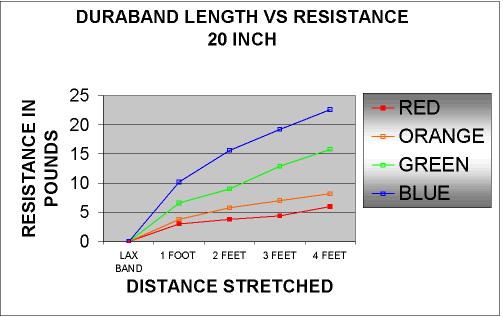
Pitchvision Academy Forums |

Chat about coaching, fitness, drills, skills and mental training |
02 Oct 09 at 07:21 |
|
| Dura-band response to miCricketCoach Article | |
|
Below is the unedited response we got from Duraband about this article on miCricketCoach. Your comments are welcome as always:
In response to Mr. Hinchliffe’s opinions review of the Duraband® Complete Cricket Trainer. I felt compelled to respond to several of his comments as I have been involved with the training and sports medical research of this product. The components of the system have some very unique biomechanical features that could easily be overlooked by an individual with little or no training in sports medicine or biomechanics. The specially adapted ball attachment guides the user to give neural feedback to the brain for functional training, working the specific muscles used for that particular movement in the same order of firing as they would in a game or practice. So not only does it strengthen the specific muscles used for throwing but promotes better motor sequencing leading to increased velocity and functional movement. In addition the ball attachment helps to work both the forearm and shoulder muscles simultaneously helping to reduce fatigue and potential injury in both the elbow and shoulder. The incident of elbow injury and shoulder injury are on the rise in the US in baseball as recently stated in the New York Times. Cricket is following this trend as well with arm injuries reported as high as 34% of all cricket injuries. Mr. Hinchliffe’s “I've not used these bands as part of a training plan before. I do have reservations about whether using bands can directly improve cricket performance”. Soon to be published will be a study showing the effectiveness of the Duraband® Complete Baseball Trainer which uses essentially the same training system to increase throwing velocity, decrease post throwing soreness, improve fatigue reduction and improve rotator cuff strength. This study was completed at the University of Pittsburgh Medical Center and the All American Baseball Training Center on 160 elite baseball players from the ages of 9-19. Further, as far as Mr. Hinchliffe’s comments questioning whether exercise bands can have a training effect on healthy individuals is very clear in the literature. Just to name a few:
Mr. Hinchliffe’s “Research has shown that as little a 15% difference between left and right sides can dramatically increase your chances of injury. I would agree that creating imbalances is not a good thing when it comes to injury. Although the focus on the Duraband® Complete Cricket Trainer is on functional movements to increase performance, many of these exercises provide resistance to both sides of the body and are done bilateral. Most research suggests a decline in shoulder rotator cuff strength with increased throwing secondary to stretch weakness and micro trauma that occurs with continued throwing or bowling in this case. That is the focus of the cricket training for adults and children. How many times do elbow and shoulder injuries occur in your non-bowling arm secondary to overuse? That is correct they don’t. Why, the demands are placed on the bowling arm not the non-bowling arm. This product does address symmetry training, but the demand and breakdown is clearly on the bowling arm and to increase performance and reduce injury it needs to be as strong or stronger than the non-dominant side to increase speed and protect from injury. I would be very careful discouraging players youth to professional from functional training and sport specific strengthening and conditioning for their bowling arms for fear of over strengthening; this is not likely to happen. Strengthening the sport specific muscles that we know (through sound research) breakdown and lead to injury and underperformance, only raises the threshold of where tissue failure occurs. Mr. Hinchliffe’s “On top of this, the added resistance to these movements may not be enough to improve strength but might be enough to alter technique. If you have ever thrown a heavy object you know you have to 'heave' it whereas a cricket shot is more of a smooth swing.” Adding resistance to these movements does in fact improve strength in multiple muscles and muscle firing in the exact pattern of movements occurring in a game. This functional type of training is very popular in the US and continues to grow. Apparently from this comment it is not part of Mr. Hinchliffes training regiment. If you understand the mechanics of band resistance you know the resistance curve (length vs force) for bands is a smooth linear progression with progressive increase as opposed to ballistic forces such as weighted balls or free weights that can cause undo tissue stress and trauma. Below is the ratio of Duraband® taken from their website, but this is true for most resistance bands. Mr. Hinchliffe’s Their muscles are stronger so the training effect is greatly reduced right away. Even the strongest band would become too easy quite quickly when used for general training. This is simply not true, these particular bands can generate a significant amount of force up to 50+ lbs of force per band depending on color, and bands may be used simultaneously to increase or even double the resistance. Some top professional American football players and other sports use bands exclusively for strengthening mainly because of their ability to perform functional movement with resistance. When speaking of the throwing muscles like the rotator cuff and arm muscles they need very little resistance to become fatigued. Doing the right exercises with proper technique at the proper frequency and intensity level for the sport you are playing is extremely important to improve performance and reduce chance of injury. I would encourage Mr.Hinchliffe’s to closely examine the rational behind the mechanics of Duraband® cricket ball and Durabat®, I think he will realize its more than meets the eye. Dr. Brian F. Hagen DPT. MS. OCS. FAAOMPT
|
|


